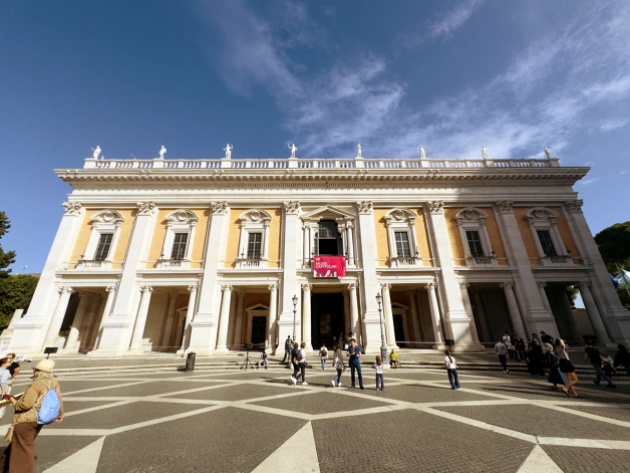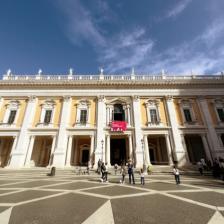
An important chapter in the PNRR – Caput Mundi project has come to a closure with the completion of the first phase of restoration work, which has brought the majestic architectural backdrop of Piazza del Campidoglio back to life. The façades of the Palazzo dei Conservatori and Palazzo Nuovo are finally back to their former glory after months of work that began in November 2024.
With an investment of €3.51 million, the works, which represent the first step in a larger programme to be completed by June 2026, also include the restoration of the Palazzo Senatorio and maintenance of the square. To complete the work, a new artistic lighting system will enhance the architecture at dusk, restoring the symbolic heart of Rome to its most authentic light.
The interventions involved the restoration of the brick curtain walls, architectural elements and sculptures adorning the balustrades of the two buildings, historic homes of the Capitoline Museums. The basalt and travertine flooring of the porticoes, together with the ceilings – undergoing conservation work for the first time – have been carefully restored. Great attention was also paid to the rainwater collection and drainage system, which has now been brought up to modern standards.
The current layout of the square and its buildings is the work of Michelangelo Buonarroti, who was commissioned by Pope Paul III in 1538 to redesign the Capitol Hill, the symbol of Rome's civil and religious power. The project restored unity and harmony to the existing buildings – the Palazzo Senatorio and the Palazzo dei Conservatori – and marked an epoch-making change in urban planning.
The Palazzo dei Conservatori, built in the mid-15th century at the behest of Niccolò V, was redesigned by Michelangelo according to a rigorous geometric scheme with two orders: Corinthian for the large pilasters that mark the façade, and Ionic for the columns of the portico below.
The Palazzo Nuovo, already included in Michelangelo's design, was built in the 17th century at the behest of Clement VIII and completed by Girolamo Rainaldi. Its façade elegantly echoes the compositional balance of the Palazzo dei Conservatori, completing the harmony of the entire square.
In 1734, during the pontificate of Clement XII, the Museo Capitolino was founded, the oldest public museum in the world, whose first nucleus was the prestigious sculpture collection of Cardinal Alessandro Albani.
 Condividi
Condividi












































